iZotope Trash is back — but where’s the pro version?
iZotope has brought back its multiband distortion and convolution plugin Trash, with a complete redesign that streamlines the feature set to make it more intuitive
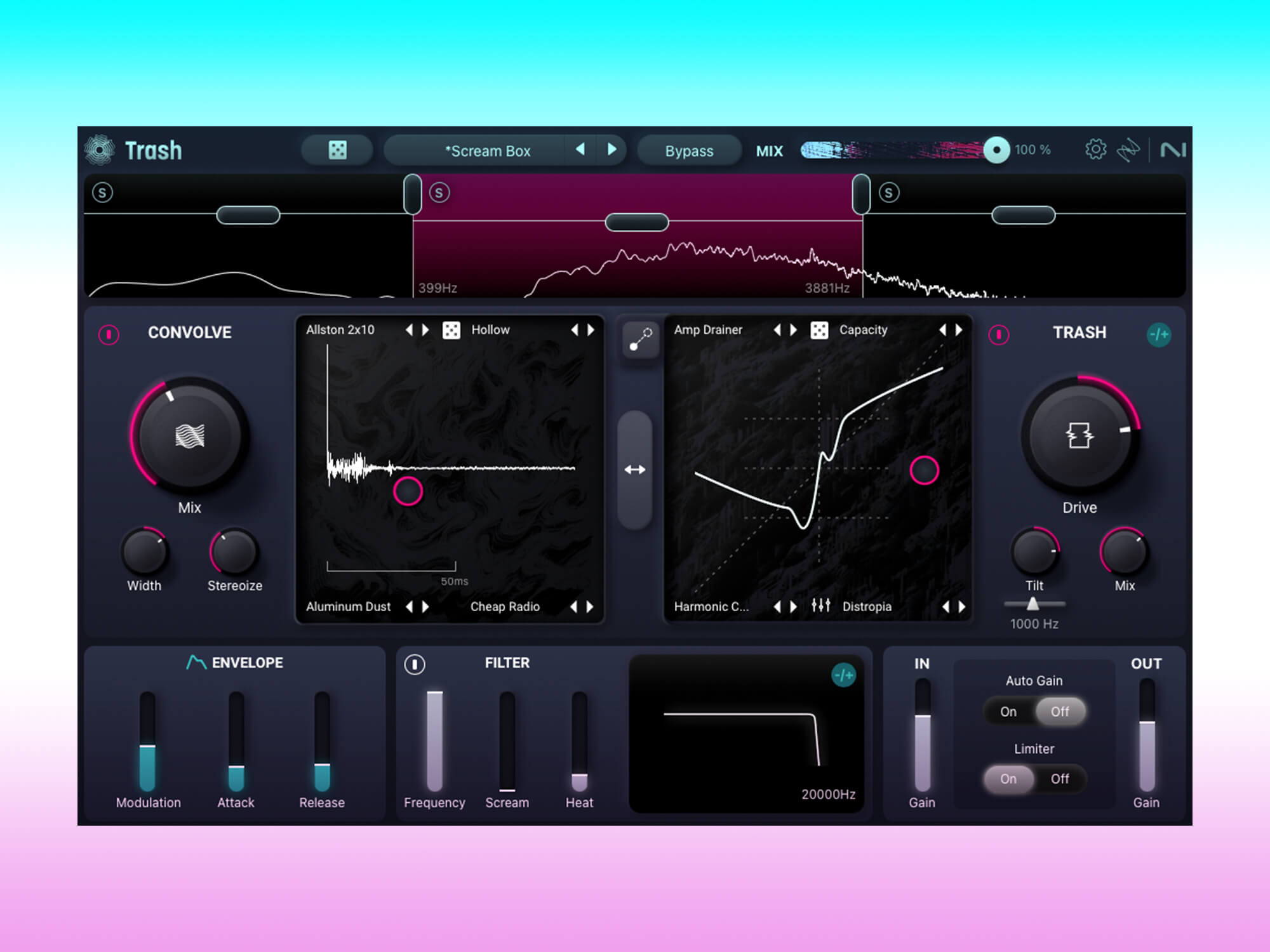
iZotope Trash plugin
Review Overview
Our rating
6
Our verdict
⊕ Massive library of distortion and convolution settings
⊕ Varied and characterful results
⊕ Fast and playful workflow
⊖ Missing useful features that Trash is revered for
⊖ Auto gain is not transparent
⊖ Modulation is very basic
⊖ Limited filter
⊖ No oversampling or scalable interface
⊖ New interface will be too limiting to experienced users
£95 (£76 introductory price), upgrades available for existing users, izotope.com
Trash 2 is now over 12 years old and, in that time, has gained cult status as a go-to sound design tool. This is thanks to producers such as Noisia showcasing how they use it to mangle sounds and craft complex basses.
Many producers grouched when iZotope canned Trash 2 in 2022 but, this month, the brand finally salvaged Trash as a redesign rather than ‘Trash 3’. The new version features a streamlined interface and some useful new features, but leaves us wanting a lot more.
What is iZotope Trash?
Trash is a multiband processor with a unique combination of a distortion unit and a convolver in one.
The distortion, or Trash, module features 69 varied distortion types, from subtle tube saturations to screaming distortions, crunchy bit-crushed sizzles and wild, glitching waveshapes. Four of these distortions can be loaded into an X/Y pad to blend and create new shapes. You get a Drive control and a wet/dry dial, which is separate from the global Mix dial.
A Tilt EQ has useful controls for the tilt amount and crossover frequency. This can make a huge difference to the distribution of harmonics, as it changes the audio going into the distortion.
There’s also an Advanced Controls section, which shows a dial called Style for certain distortion types, giving you additional control over the intensity of the distortion effect. Although it’s not that useful in a practical sense, we like the way the Transfer curve is displayed and updates as you increase the drive and morph between different distortions.
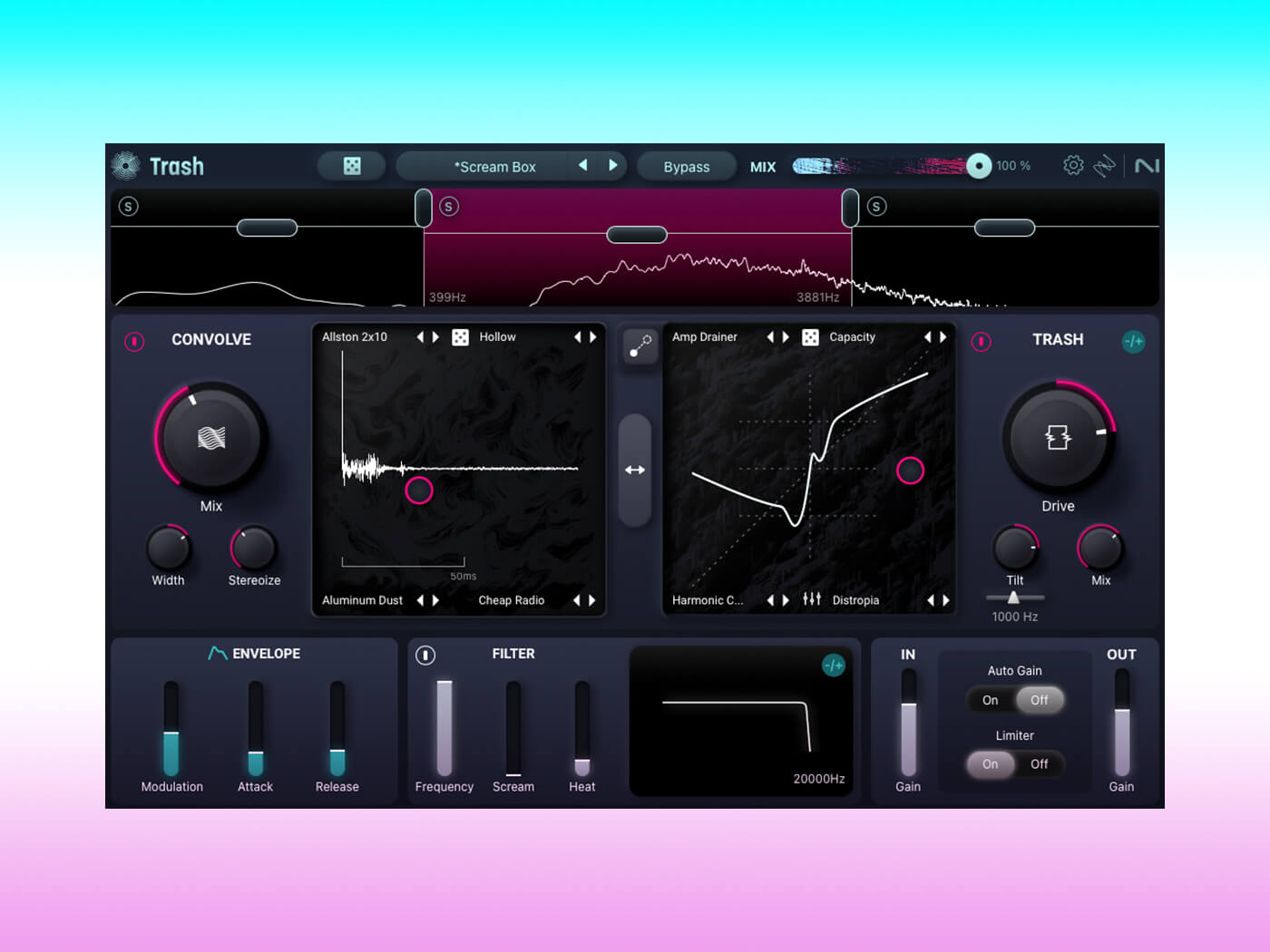
Trash’s Convolve module
The Convolve module allows you to apply the acoustic characteristics of a space or sound to your audio and has four presets with an X/Y pad.
Here, we have a massive collection of 620 different impulse responses (IRs) split into categories such as Amps, Edge, Devices, Reverse, Animals, FX and more. A large number of these are the same sound but with subtle variations as they are recorded with condenser, dynamic and ribbon mics. A mix dial lets you control how much of the impulse response sound is applied to the signal, plus dials for width, and Stereoize.
If you want a subtle effect, you could pick a small room or clean amp setting with some added Stereoize and just apply it to the top end to help make dry sounds feel more three-dimensional. Or you could go all out and make a percussion loop sound like it’s been blended with a screeching monkey morphing into a dog.
There’s a lot you can do, and this is made even more flexible by the ability to load in custom IRs. As with the Trash module, you get a visual graphic that updates as you morph around, although here it shows a more useful source waveform for the IR alongside the length in milliseconds.
Having this many impulse responses at your fingertips and in multiband makes Trash quite a unique tool. But we wish for a copy or link tool on Convolve to easily replicate settings across frequency bands, as working with multiband distortions and placing them in a single space is a hassle.
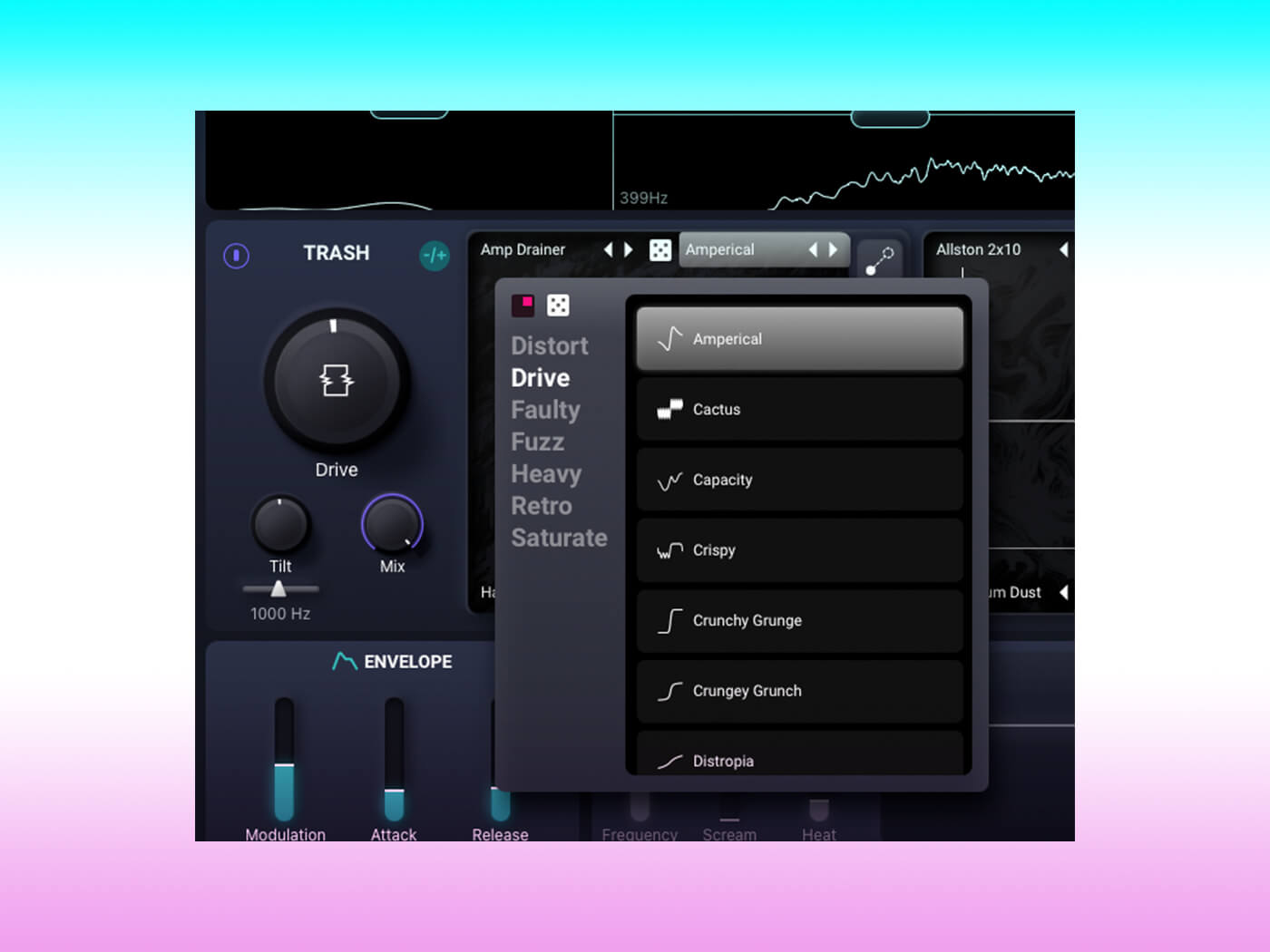
iZotope Trash’s new filter
To help refine the sound, Trash has a new low-pass filter that’s placed on the entire signal chain post-distortion and convolution. It sounds pretty good, has a lively resonance control called Scream, and the input can be pushed into saturation by a slider called Heat.
However, these controls are limited so we find ourselves reaching for another EQ plugin to help shape the final output. Even just adding the option to have a high-pass or band-pass would make Trash more appealing. But if you want to reduce any low-frequency build-up then you can at least use the multiband options to affect the subs differently.
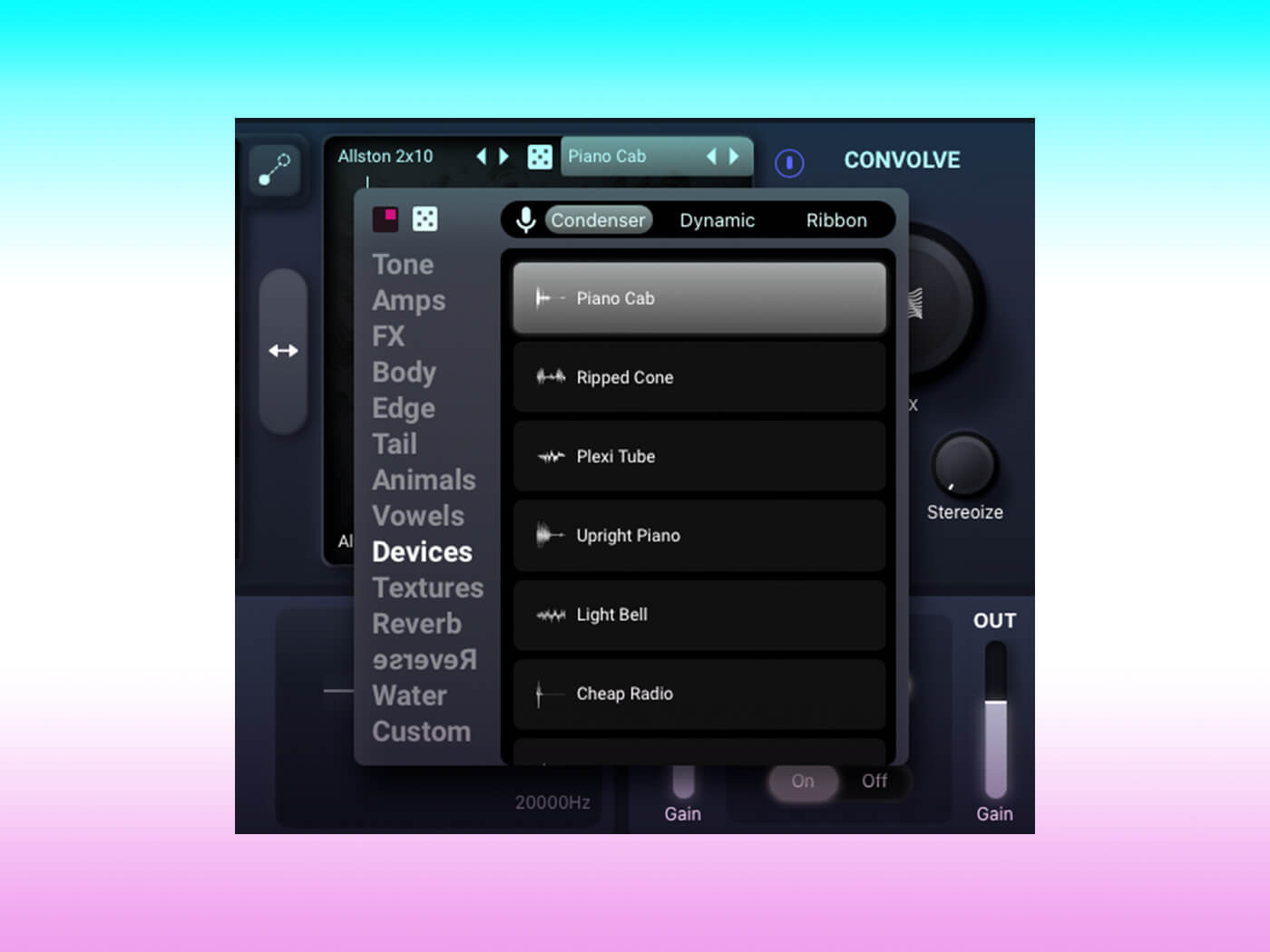
Trash’s new envelope
The final element of sound shaping comes from a new Envelope section which dynamically affects the Drive amount, the blend of distortion modes on the X/Y pad, and the filter cutoff frequency. It can give sounds some extra life, but why didn’t iZotope include an LFO and the ability to modulate the Convolve module? When you compare the modulation options of competing products such as FabFilter’s Saturn 2, Arturia’s Dist COLDFIRE, and Minimal Audio’s Rift 2, it feels incredibly basic.
Trash 2 boasted an envelope follower for the EQ/Filters — not the distortion — and also had a sidechain input. Although this iteration of Trash should be seen as a new version and not Trash 3, it’s disappointing that such flexible features have been omitted here.
Trash’s saving grace is its sonic flexibility. For everything it lacks compared to its competitors, it does have the largest number of distortion and convolution types. These are best explored in the broad number of presets and categorised into folders. These range from grungy guitar tones, and subtle mixing tools that excite the top end, through to weird and cavernous experimental patches.
Its randomised tools are useful for crawling out of creative blocks and helps cement Trash as a more playful tool can spawn happy accidents.
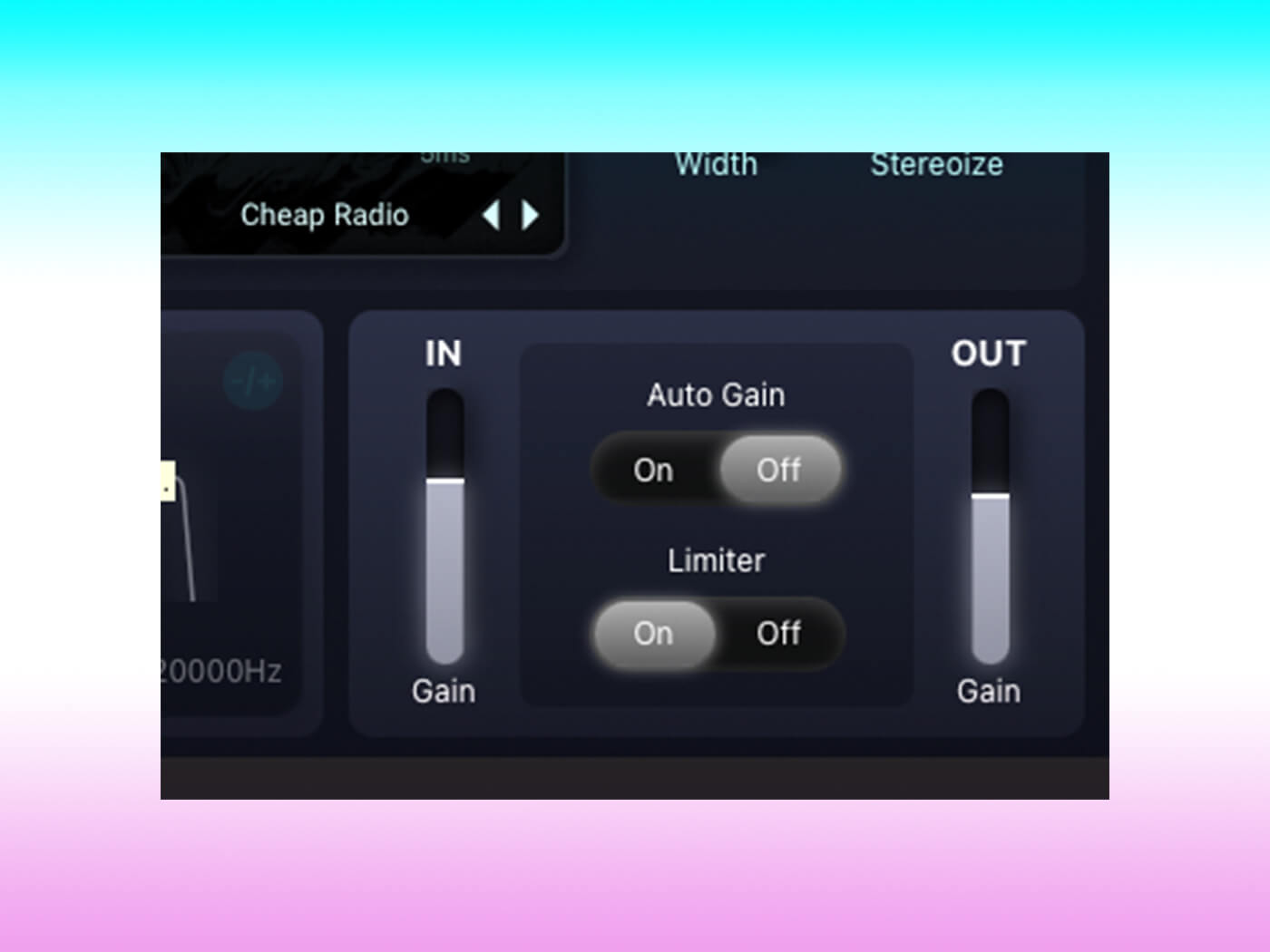
Limiting and Auto Gain
With all these crazy harmonics flying around, things can quickly get very loud, but thankfully Trash has a built-in limiter and a new Auto Gain feature. The Auto Gain is a smart idea on paper, but upon testing, we find it’s doing something strange to the transients. Ideally, it should be a totally transparent operation, but looking at some before and after waveforms suggests it acts like a compressor that emphasises the front end of hits.
Oddly, it also isn’t a global control, meaning that switching presets causes quick volume jumps.
These things considered, we opt to avoid the Auto Gain and volume match manually.
Is Trash too simple?
Trash’s new-look interface is clean, fluid and functional. But its simplicity and colour scheme make it feel less pro than iZotope’s other plugins. It’s the company’s first plugin to also be released as an iPad app, which explains the decision to feature everything on one screen. But it comes at the cost of oversimplification. The old Trash 2 layout wasn’t perfect, with multiple pages and settings, but it’s way more flexible compared to this new version.
Less is (not) more
In many ways, this version of Trash is a downgrade from Trash 2. iZotope has removed, among other things, the ability to draw custom waveshapes, the Dynamics and Delay modules, and the super-flexible pre- and post-effect EQs. A large portion of Trash 2’s fan base are producers who love to dig deep into sound design and enjoy plenty of control and editing options, and it’s hard not to feel like this redesign isn’t made for them.
The £95 price tag feels steep, too. We shouldn’t ignore the value in the large and often unique collection of impulse responses, but we wouldn’t be surprised if Trash finds more of a market when it drops in price in an inevitable future iZotope sale.
Trash is still a decent plugin that will find a new generation of users. The combination of characterful distortion and convolution options makes it unique, and the new layout encourages play and experimentation in a way the old version never could.
Still, we hope that a Trash Advanced or a Trash Pro is on the horizon, with additional filters and modulation options that can restore this tool back to its former glory.
Key features
- Multiband processor with 3 flexible bands
- Trash module with over 60 distortion types
- 64-bit VST3, AU, AAX, AUv3 (on iPad)
- Redesigned interface with all controls on one screen
- Convolve module with over 600 impulse responses
- X/Y pads to blend between settings for each module
- Pre-distortion tilt filter
- Post-effects, self-resonating low-pass filter
- Envelope follower modulation source
- Swap module order in signal chain
- Wet/dry mix controls
- Randomise feature for preset choice and X/Y pads
- Auto gain and output Limiter